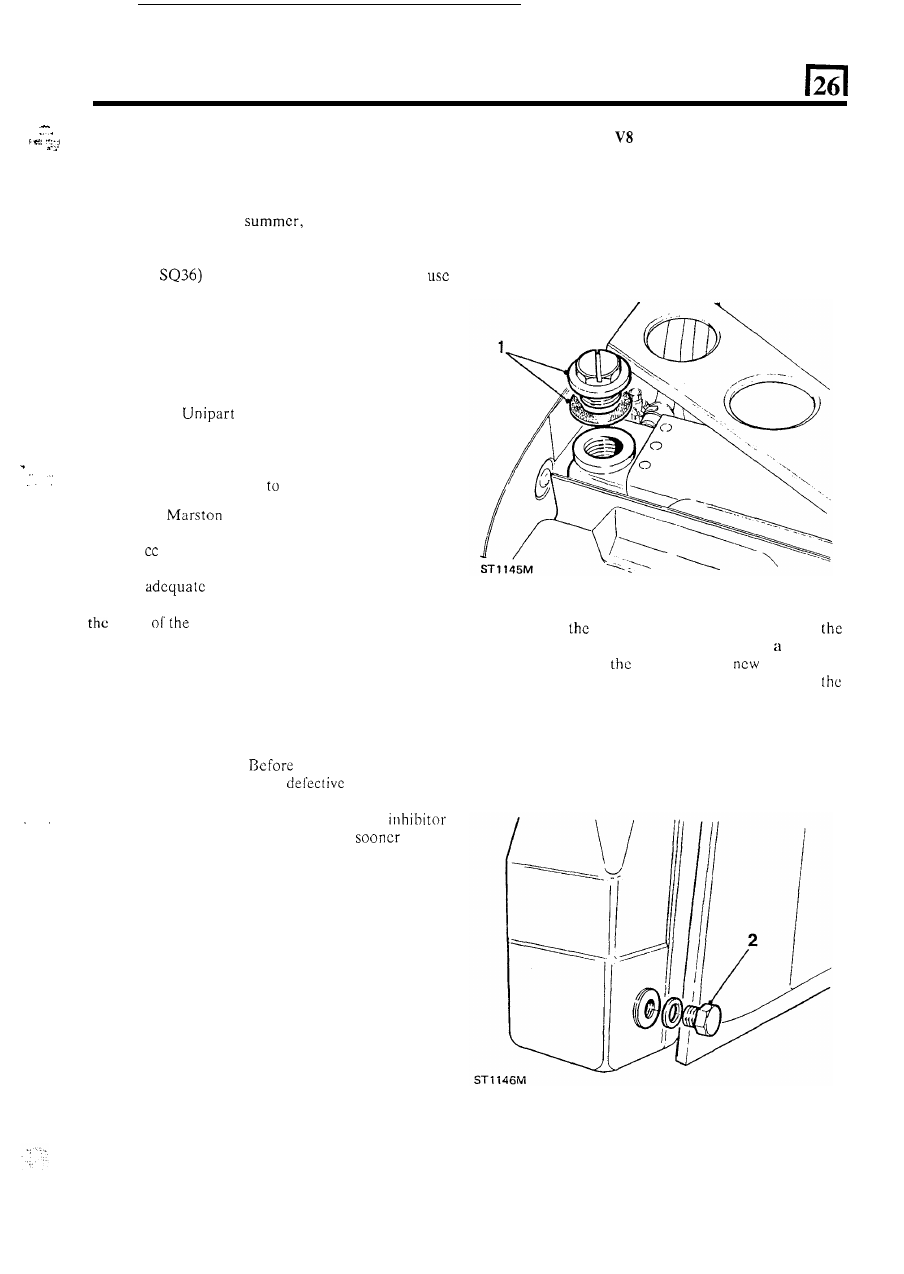Defender 90 / 110 / 130. Manual - part 64

COOLING
SYSTEM
- .
ENGINE PROTECTION
DRAIN AND
FILL
ENGINE COOLING SYSTEM
. .
To prevent corrosion of
the aluminium alloy engine
parts it is imperative that the cooling system is filled
with a solution
of clean water and the correct type of
anti-freeze, winter and
or water and inhibitor
if frost precautions are not required. Never
fill or
top-up with water only, always add an inhibitor
(Marstons
if anti-freeze is not used. NEVER
salt water with an inhibitor otherwise corrosion will
occur. In certain territories where the only available
water supply may have some salt content, use
only
clean rainwater or distilled water.
Recommended solutions
Anti-freeze
Universal
Anti-freeze
or
permanent type ethylene base, without methanol, with
a suitable inhibitor
for aluminium engines and engine
Use one part of anti-freeze
one part water.
Inhibitor
Lubricants
SQ36
inhibitor
concentrate.
Use
100
of inhibitor per litre of water.
Anti-freeze can remain
in
the cooling system and will
provide
protection for two years provided
that the specific gravity of the coolant is checked before
onset
second winter and topped-up with new
anti-freeze as required.
Land Rovers leaving
the
factory have the cooling
system filled with
50% of anti-freeze mixture. This
gives protection against frost down to minus
47°C
(minus
53°F). Vehicles so filled can be identified by a
label affixed to
t h e
windscreen and radiator.
After the second winter the system should be drained
and thoroughly flushed.
adding new anti-freeze
examine all joints and renew
hoses
t o
make
sure that the system
is leakproof. Inhibitor solution
should be drained and flushed out and new
solution introduced every two years, or
where
the purity
of the water is qucstionablc.
See the ‘General specification data’ section
for
protection quantities.
parts.
WARNING: Do not remove the radiator filler cap when
the engine is hot because the cooling system is
pressurized and personal scalding could result.
1. Remove the radiator filler plug.
2. Remove
radiator drain plug and allow
coolant to drain, if neccssary, into
suitable
container. Refit
drain plug and
washer. The
drain plug is situated
on the left-hand side of
radiator towards
t h e
bottom facing the engine
compartment.
NOTE: Disconnect bottom hose to drain on radiators
without a drain plug. Connect hose after draining.
3 . Remove the engine drain plugs, one each side of the
cylinder block, beneath the exhaust manifolds.
Allow the coolant to drain and refit plugs and
washers.
1